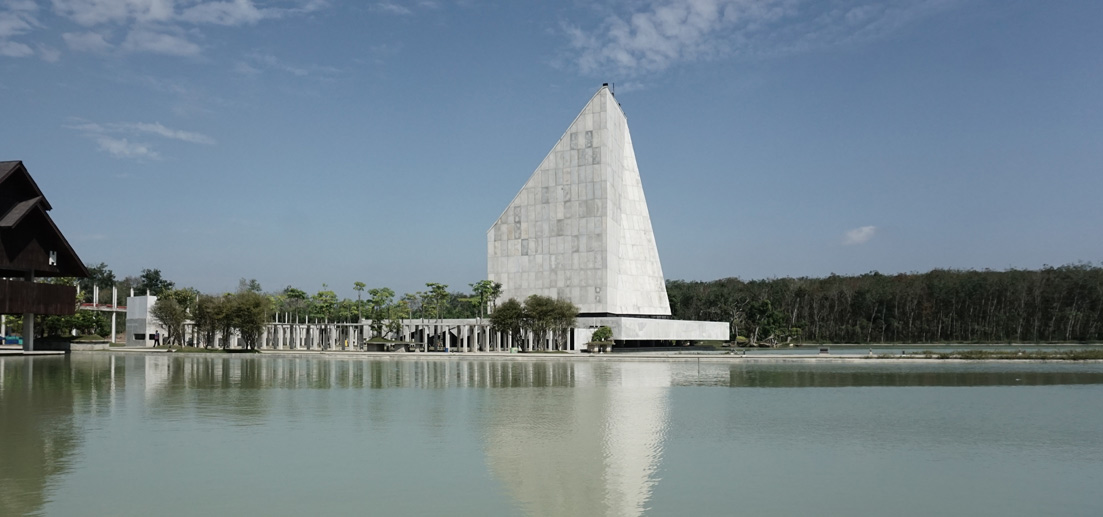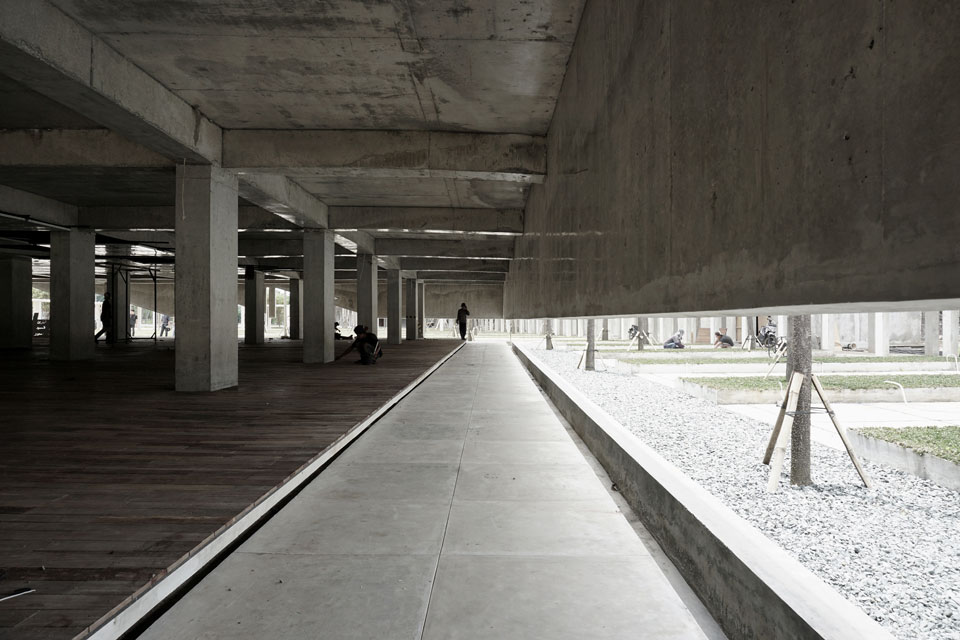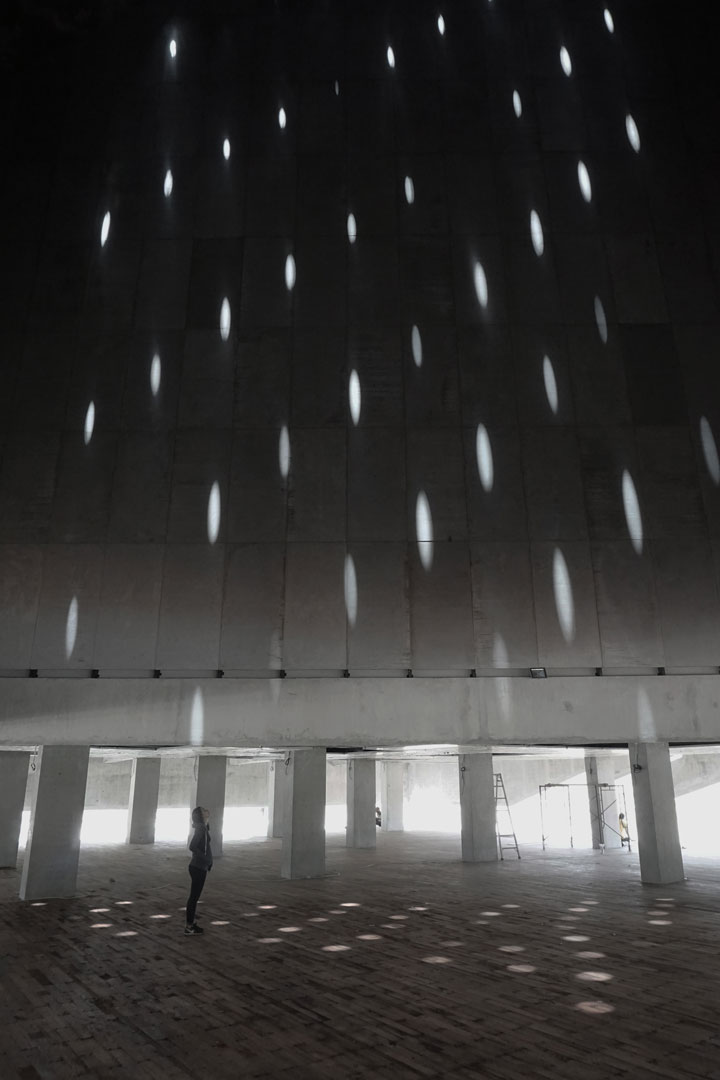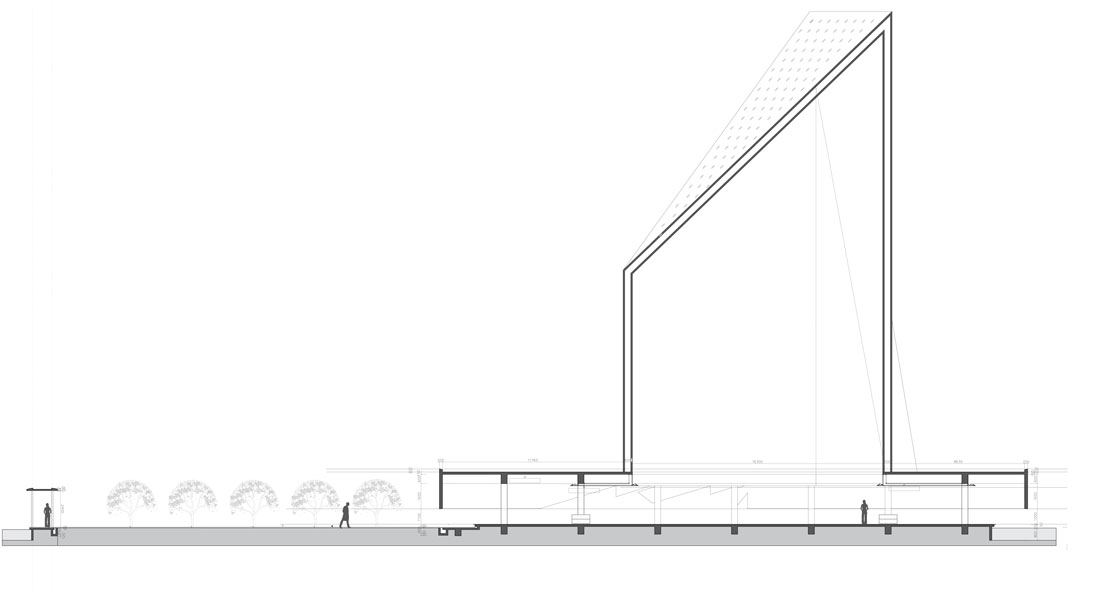
99 light openings illuminate concrete mosque by Andra Matin
The As Sobur Mosque stands in Tulang Bawang Barat’s Islamic Center in Lampung, Indonesia. The mosque is at the heart of a master plan by Indonesian architecture maverick Andra Matin to transform Tubaba—shorthand for Tulang Bawang Barat—into a pioneering transmigration city by 2050. Two of the ten proposed key projects, the As Sobur Mosque and Sessat Agung (a community hall), are already built and were inaugurated in October 2016.

The vertical massing mirrors man’s relationship with the higher power – or in the Islam expression known as habluminallah. Whereas Sessat Agung’s massing are spread out vertically, to reflect human being’s relationship with one another, also known as habluminannas. The proximity of the two is emblematic of the Islamic belief of the need for balance between habluminallah and habluminannas—man and God; man and his fellow man.
READ MORE: The Mod-art and Mid-century Leanings of Basilan cathedral

Andra Matin combined two elements usually found in mosque architecture, a dome and a minaret, by creating a large and tall tower as the main mass. The tower creates a very high void within the mosque. This tower rests on a low podium mass to highlight the tension of the interiors. The wide podium uses hanging walls around it to bring down temperature and protect it from rainfall, while still providing views to the landscape surrounding the mosque. Lampung’s traditional scripts were carved into several sides of the walls to underline context and identity.

Concrete was used as the main material. Its homogeneity projects a sense of honesty and strength. The cold and light expression of the concrete is also in contrast with Sessat Agung’s materials, which are warmer and darker. The mosque’s ceiling is made of reflective metal sheets so that people can reflect upon themselves whenever they look up and pray. The name of Allah (Asma Ul Husna)was carved on the ceilings repetitively. At night, these perforations function as the mosque’s main light source.


The As Sobur mosque can fit up to 2500 congregation, and implements Islamic numerology throughout its design. To name a few, the mosque’s platform dimensions are 34 by 34 meters, taken from the number of sujud (prostrations) muslims do each day in their prayers. The distance between columns are 5 meters, taken from the number of fardhu prayers in a day. There are 30 juz (parts) in the holy Qur’an, and thus the tower stands 30 meters. There 99 light openings atop the tower were inspired by the 99 names of Allah. There are also 114 number of columns in the building’s corridor, taken from the number of surahs (chapters) in the Qur’an.
For more about the Tubaba Masterplan by Andra Matin, grab a copy of BluPrint’s latest issue (Volume 4, 2017). ![]()

READ MORE: Fabian Tan modernizes an ancestral residence in KL
Images courtesy of andramatin


